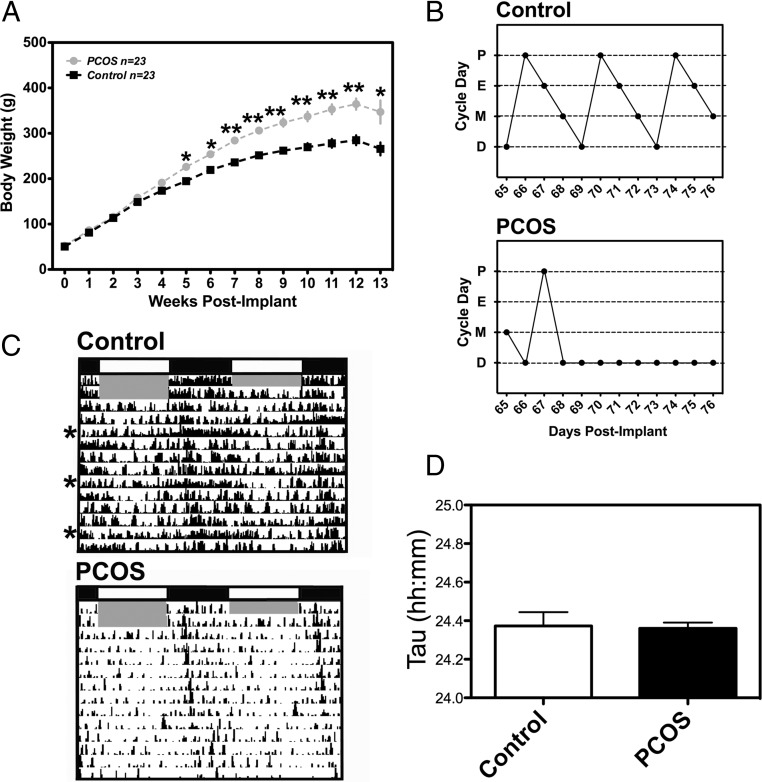Figure 1.
Pubertal DHT exposure produces metabolic and reproductive features of PCOS in per1-luc rats. (A) Weekly body weights from PCOS and healthy control per1-luc rats. Rats with PCOS gained significantly more weight over the course of treatment than their healthy counterparts (all animals fed a standard diet). (B) Estrous cycle patterns from representative per1-luc rats exposed to DHT (PCOS rats) or placebo pellet (9–11 wk after implant). PCOS rats displayed intermittent or irregular cycles marked by persistent diestrus. (C) Representative activity records of per1-luc rats given a placebo pellet (control; n = 3) or a DHT pellet (PCOS; LT exposure, 9-11 wk after implant, n = 4). The gray shaded area indicates the time of lights-on during a L:D cycle. The asterisks to the left of the placebo actogram indicate increased activity on putative “behavioral estrus.” (D) The free-running period of total activity was not affected in animals exposed to DHT (n = 3-4/group). Data in panels A and D are mean ± SEM; *P < .01, **P < .001. In panel B: D, diestrus; P, proestrus; E, estrus; M, metestrus.

